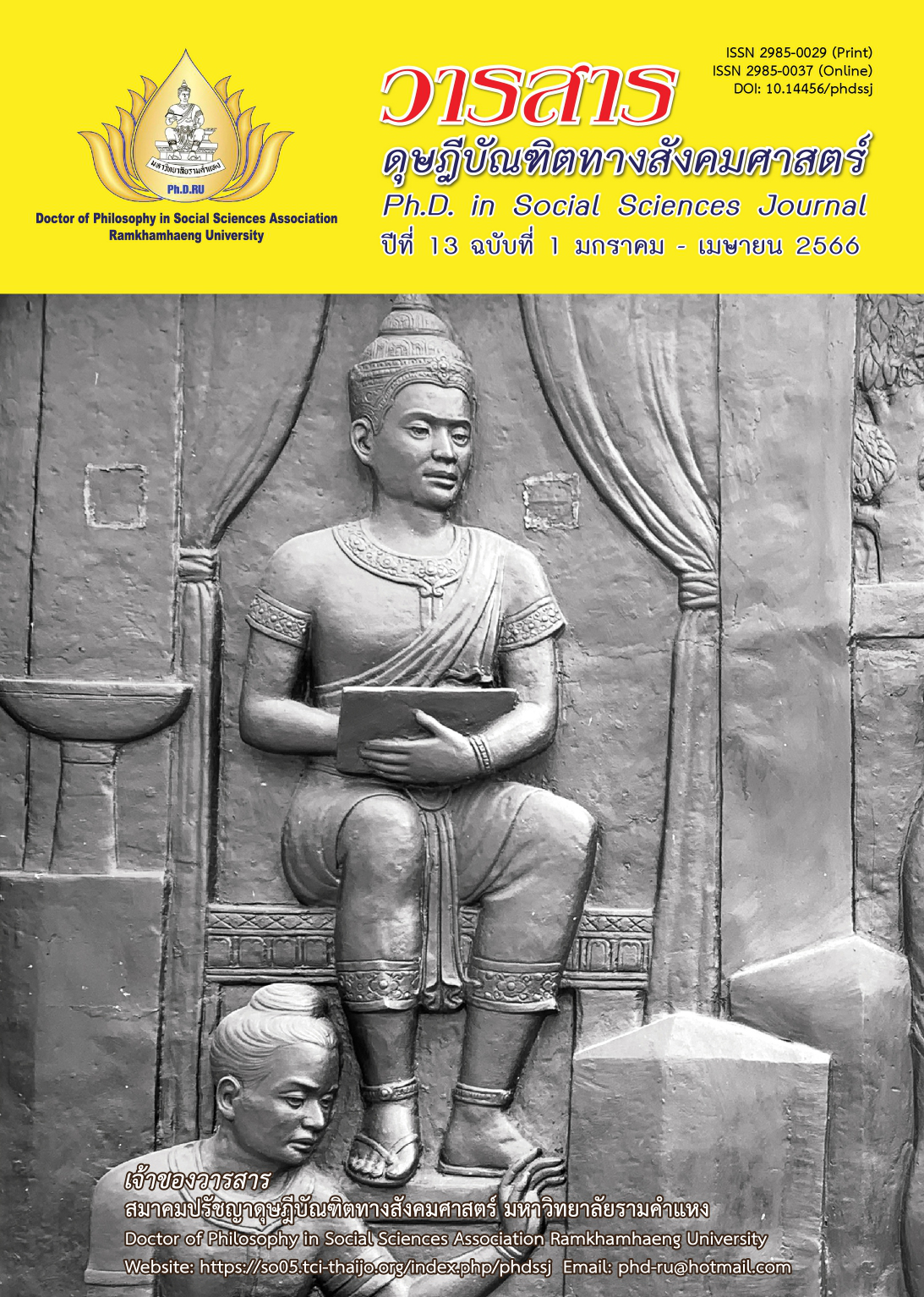Legal Problems Related to Holders of Community Rights in the Utilization of Natural Resources: A Case Study of Forest Land in the Conservation Area
Main Article Content
Abstract
This research article aims to study the concept and theory of community rights in the utilization of natural resources, to analyze Thai law, international law and foreign law as well as finding solutions and formulating legislation to protect community rights to use forest lands in protected areas. The researchers used the qualitative research methodology by using 3 methods of data collection, namely documentary research, in-depth interviews and focus group discussion and analyzed the data by using content analysis techniques and comparison interpretation.
Findings show that the Constitution of the Kingdom of Thailand B.E. 2560 (2017), decreases holders of local community rights. The National Reserved Forest Act B.E. 2507 (1964), the National Park Act B.E. 2562 (2019) and the Wildlife Preservation and Protection Act B.E. 2562 (2019) pose legal problems in not determining the definition of community; measures of community protection certification not having community participation. Other types of law related to natural resources except forest land. International law (hard law) is a legal guideline that Thailand prescribes a law in Thailand for the rights protection certification of ethnic groups and local communities. They can reside, earn a living, inherit culture, traditions, conservation, and utilize forest land. India, the Philippines, the United States of America, and Australia have a general law for certification of community rights, traditional local communities, local culture, and tribes in the utilization of forest land and that in the conservation area.
Article Details

This work is licensed under a Creative Commons Attribution-NonCommercial-NoDerivatives 4.0 International License.
Academic articles, research articles, and book reviews in the Ph.D. in Social Sciences Journal are author’s opinions, and not the publisher’s, and is not the responsibility of the Ph.D. in Social Sciences Journal Philosophy Association, Ramkhamhaeng University. (In the case that research is done on human, the researcher has to be trained in Ethics for Doing Research on Human Training and has to produce the evidence of the training).
References
Australian Government Federal Register of Legislation. (2019). Aboriginal lands rights (northern territory) Act 1976. Retrieved from https://www.legislation.gov.au/Details/C2019C00117
Bangchang, O. N., & Srisaowalak, I. (2009). Project for studying approaches to appraisal of economic values from environmental impacts to support the judicial process. Office of the Court of Justice, Rapeepatanasak Research Institute. [In Thai]
Boonmee, T. (2003). Pluralism. Office of the National Research Council of Thailand. [In Thai]
Bunnag, C. (2011). The concept of shared resource management: Foreign experiences and concepts in Thailand. Reform Assembly Committee, Academic Network for Reform Working Group. [In Thai]
Human Rights. (2003). Convention on the Elimination of All Forms of Racial Discrimination (CERD). Retrieved from http://humanrights.mfa.go.th/th/humanrights/obligation/international-human-rights-mechanism/CERD.php [In Thai]
Intapuntee, P. (2011). Community right towards natural resource explotation and management: Case study of Karen communities in Um Phang Wildlife Sanctuary. Master’s Thesis of Laws, Thammasat University. [In Thai]
Kanchanapan, A. (2001). Community dimensions, local way of thinking about rights, powers and resource management. Thailand Research Fund. [In Thai]
Office of Environmental Policy and Planning. (2003). Convention on biological diversity. Retrieved from https://qsds.go.th/newosrd/wp-content/uploads/sites/115/2021/02/Biological.pdf [In Thai]
Office of the National Human Rights Commission of Thailand. (1997). Annual Report 1997. Author. [In Thai]
Office of the National Human Rights Commission of Thailand. (2012). General international law principles on human rights treaties (UN International Covenant on Civil and Political Rights (ICCPR)). Author. [In Thai]
Officialgazette. (1992). National integrated protected areas aystem act of 1992. Retrieved from https://www.officialgazette.gov.ph/1992/06/01/republic-act-no-7586
Officialgazette. (1997). Indigenous peoples, rights Act, 1997. Retrieved from https://www.officialgazette.gov.ph/1997/10/29/republic-act-no-8371
Prokati, K. (2007). The rights of individuals who form a community. Winyuchon. [In Thai]
Singhaneti, B. (2004). Fundamentals of rights, liberties and human dignity under the constitution (2nd ed.). Winyuchon. [In Thai]
Sribuaiam, K., Temsiriwattanakul, T., & Tengaumnuay, T. (2017). The relationship between human rights and the environment for sustainable protection of human rights related to the environment. Office of the National Human Rights Commission of Thailand. [In Thai]
The Official Gazette is the Official Journal of the Republic of the Philippines. (n.d.). The constitution of the Republic of the Philippines. Retrieved from https://www.officialgazette.gov.ph/constitutions/1987-constitution
Thitipatana, P. (2003). Human rights and development, declaration on the right to development. Office of the National Human Rights Commission of Thailand. [In Thai]
Tribal Development Department. (n.d.). Scheduled Tribes & Other Traditional Forest Dwellers (Recognition of Forest Rights) Act, 2006. Retrieved from http://himachalservices.nic.in/tribal/en-IN/index.html
United States Department of Agriculture. (n.d.). U.S. Forest Service, National Fores Mangement Act (NFMA). Retrieved from https://www.fs.usda.gov/emc/nfma
Yuyuenyong, P. (2003). Convention on access to information public participation in decision-making and access to justice in environmental cases 1998 (Aarhus convention) and sustainable environmental justice. Retrieved from http://public-law.net/publaw/ view.aspx?id=1538


